Themed collection 2023 Journal of Materials Chemistry A Lunar New Year collection

Low-temperature resistant gel polymer electrolytes for zinc–air batteries
The rapid development of wearable devices has put forward high requirements for stable, solid-state, flexible and even stretchable energy storage systems.
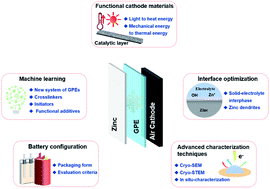
J. Mater. Chem. A, 2022,10, 19304-19319
https://doi.org/10.1039/D2TA02381D
Recent strategies for activating the basal planes of transition metal dichalcogenides towards hydrogen production
The currently strategies for activating the TMDC basal planes toward hydrogen evolution reaction were summarized, which are divided into internal and external regulation, depending on whether the pristine structure is altered or not.
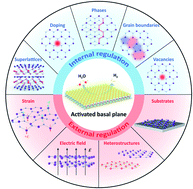
J. Mater. Chem. A, 2022,10, 19067-19089
https://doi.org/10.1039/D2TA02458F
Understanding (photo)electrocatalysis for the conversion of methane to valuable chemicals through partial oxidation processes
The review overviews the mechanism of C–H activation through electron–hole mediated pathways in photo and electrocatalysis, and introduces various strategies to increase the conversion of CH4 as well as the selectivity to desired products.
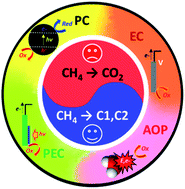
J. Mater. Chem. A, 2022,10, 19107-19128
https://doi.org/10.1039/D2TA02257E
Hydrogels for underwater adhesion: adhesion mechanism, design strategies and applications
This review summarizes the adhesion mechanism and design strategies of underwater adhesion hydrogels, and generalizes their underwater application fields (adhesives, motion monitoring, marine environmental exploration and coatings).
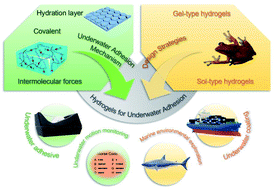
J. Mater. Chem. A, 2022,10, 11823-11853
https://doi.org/10.1039/D2TA01960D
Polybenzimidazoles (PBIs) and state-of-the-art PBI hollow fiber membranes for water, organic solvent and gas separations: a review
A comprehensive overview of the recent progress toward polybenzimidazole hollow fiber membranes, including material chemistry, molecular structure modification, spinning chemistry and process protocols, is presented with challenges and perspectives.
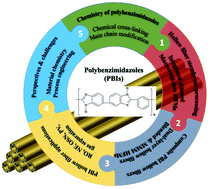
J. Mater. Chem. A, 2022,10, 8687-8718
https://doi.org/10.1039/D2TA00422D
Recent progress in organic solar cells based on non-fullerene acceptors: materials to devices
This review presents the recent progress in organic solar cells based on non-fullerene acceptors, with a wide coverage from material synthesis and processing to interface engineering, device structure, large-area fabrication, and device stability.
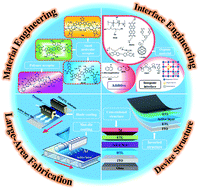
J. Mater. Chem. A, 2022,10, 3255-3295
https://doi.org/10.1039/D1TA10707K
Regioregularity-control of conjugated polymers: from synthesis and properties, to photovoltaic device applications
We summarize a variety of examples of regioregularity-controlled conjugated polymers and describe their impacts on the polymer properties and performances in polymer solar cells.
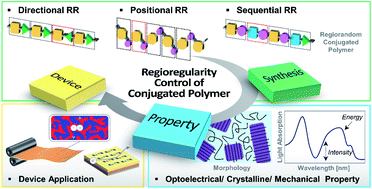
J. Mater. Chem. A, 2022,10, 2672-2696
https://doi.org/10.1039/D1TA08495J
Synthetic solid oxide sorbents for CO2 capture: state-of-the art and future perspectives
Solid oxides have been extensively investigated as possible high-temperature CO2 sorbents by a number of research groups. We summarised the different strategies to develop synthetic solid oxide sorbents.
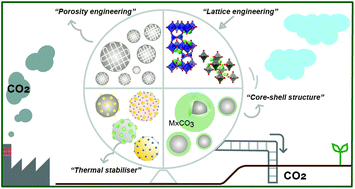
J. Mater. Chem. A, 2022,10, 1682-1705
https://doi.org/10.1039/D1TA07697C
Two-dimensional MXenes for electrochemical energy storage applications
Synthesis, properties and electrochemical energy storage applications of MXenes.
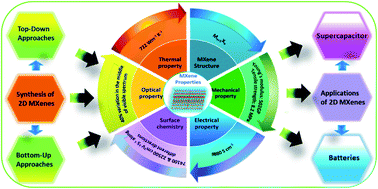
J. Mater. Chem. A, 2022,10, 1105-1149
https://doi.org/10.1039/D1TA04642J
Heterostructured hybrids of metal–organic frameworks (MOFs) and covalent–organic frameworks (COFs)
MOF/COF-based hybrids show the properties of precisely tunable compositions and structures, and provide a broad range of potential applications in gas sorption and separation, catalysis, energy transfer, biomedicine, etc.

J. Mater. Chem. A, 2022,10, 475-507
https://doi.org/10.1039/D1TA06006F
Upcycling waste poly(ethylene terephthalate) into polymer electrolytes
The first working lithium-ion battery containing polymer electrolytes derived from waste poly(ethylene terephthalate) beverage bottles is demonstrated.
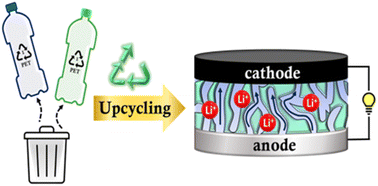
J. Mater. Chem. A, 2022,10, 24468-24474
https://doi.org/10.1039/D2TA06692K
Sustainable development of graphitic carbon nanosheets from plastic wastes with efficient photothermal energy conversion for enhanced solar evaporation
Plastic wastes are converted into two-dimensional carbon nanosheets with a graphitic-like structure and interlayer channels for improved solar evaporation performance.
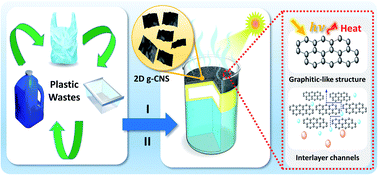
J. Mater. Chem. A, 2022,10, 19612-19617
https://doi.org/10.1039/D2TA02092K
Amorphization engineered VSe2−x nanosheets with abundant Se-vacancies for enhanced N2 electroreduction
Amorphous VSe2−x nanosheets with abundant Se-vacancies (VSe) showed dramatically enhanced NRR activity and selectivity, attributed to the amorphization-triggered Se-vacancies that promote the NRR and impeding the H2 evolution.

J. Mater. Chem. A, 2022,10, 1742-1749
https://doi.org/10.1039/D1TA06746J
Triggering interfacial activity of the traditional La0.5Sr0.5MnO3 cathode with Co-doping for proton-conducting solid oxide fuel cells
Doping the Co element into the traditional La0.5Sr0.5MnO3−δ cathode material triggers the activity of the cathode/electrolyte interface in the composite cathode, leading to impressively high cell performance for proton-conducting solid oxide fuel cells.
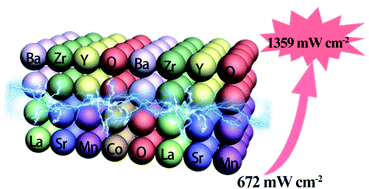
J. Mater. Chem. A, 2022,10, 1726-1734
https://doi.org/10.1039/D1TA09450E
Enhancing electrochemical performance by triggering a local structure distortion in lithium vanadium phosphate cathode for Li ion batteries
Local structural distortion caused by Ti-doping has the effect of expanding the diffusion path of Li ion.
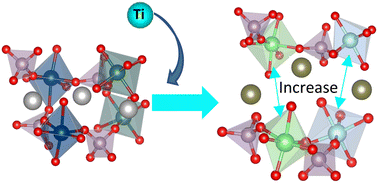
J. Mater. Chem. A, 2022,10, 25129-25139
https://doi.org/10.1039/D2TA06837K
High-performance and low-cost organic solar cells based on pentacyclic A–DA′D–A acceptors with efficiency over 16%
Developing high-performance and low-cost donor/acceptor materials is crucial for the industrialization of organic solar cells (OSCs).
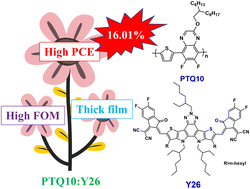
J. Mater. Chem. A, 2022,10, 24717-24725
https://doi.org/10.1039/D2TA07239D
Bandgap engineering of covalent organic frameworks for boosting photocatalytic hydrogen evolution from water
A simple and efficient way was developed to enhance the visible-light-driven water-splitting performance by varying the number of β-ketoenamine linkages in covalent organic frameworks.
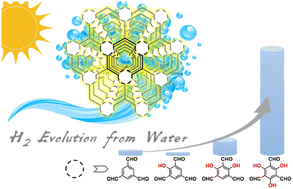
J. Mater. Chem. A, 2022,10, 24620-24627
https://doi.org/10.1039/D2TA07271H
Co, Fe and N co-doped 1D assembly of hollow carbon nanoboxes for high-performance supercapacitors
In this study, we successfully demonstrate the synthesis of a novel necklace-like Co, Fe, and N co-doped one-dimensional (1D)-assembly of hollow carbon nanoboxes (1D-HCNB-x) and its potential for supercapacitor application.
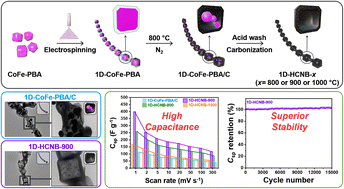
J. Mater. Chem. A, 2022,10, 24056-24063
https://doi.org/10.1039/D2TA06950D
Mechanism of coupled phase/morphology transformation of 2D manganese oxides through Fe galvanic exchange reaction
A Mn2+ defect-mediated oxidative mechanism was found responsible for the coupled morphology/phase transformation of 2D manganese oxides via Fe galvanic exchange reaction.
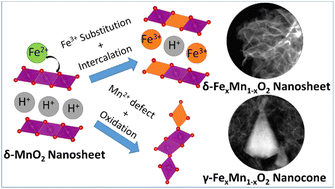
J. Mater. Chem. A, 2022,10, 24190-24198
https://doi.org/10.1039/D2TA06552E
Structural design strategies for superionic sodium halide solid electrolytes
The material design principles in this study provide fundamental guidelines for the development of superionic sodium halide solid electrolytes for high-voltage sodium all-solid-state batteries.
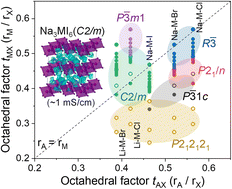
J. Mater. Chem. A, 2022,10, 24301-24309
https://doi.org/10.1039/D2TA05158C
Carbon dots as an electron extractant for enhanced photocatalytic antibacterial activity of covalent organic frameworks
An intramolecular charge transfer system was constructed to extract π-electrons from photosensitive D–A COF semiconductors to CDs through hydrogen bonding for more ROS evolution, which demonstrated high-efficiency bactericidal mechanism.
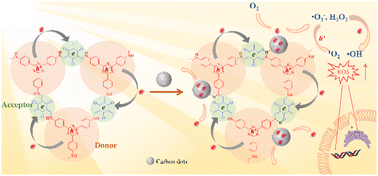
J. Mater. Chem. A, 2022,10, 23384-23394
https://doi.org/10.1039/D2TA03978H
Design of densified nickel-rich layered composite cathode via the dry-film process for sulfide-based solid-state batteries
Densified composite cathodes through dry-film process comprising different content of LiNi0.8Co0.15Al0.05O2 and Li6PS5Cl particles and their charge transport kinetics in solid-state batteries are studied by AC impedance and DC polarization analyses.
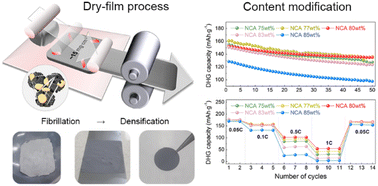
J. Mater. Chem. A, 2022,10, 23222-23231
https://doi.org/10.1039/D2TA05021H
Clarification of Li deposition behavior on anodes with a porous interlayer in Li-free all-solid-state batteries
Factors that determine the Li deposition behavior in Li-free ASSBs with a porous interlayer are systemically identified and Li deposition behavior is interpreted based on both thermodynamics and the kinetics.

J. Mater. Chem. A, 2022,10, 21995-22006
https://doi.org/10.1039/D2TA06466A
Marine waste upcycling—recovery of nylon monomers from fishing net waste using seashell waste-derived catalysts in a CO2-mediated thermocatalytic process
A strategy for marine waste upcycling and CO2 utilization by the recovery of high-value monomer from fishing net waste using seashell waste-derived catalysts in the presence of CO2.
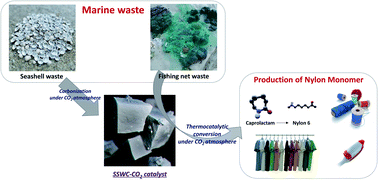
J. Mater. Chem. A, 2022,10, 20024-20034
https://doi.org/10.1039/D2TA02060B
The resistive nature of decomposing interfaces of solid electrolytes with alkali metal electrodes
A crucial ingredient in lithium (Li) and sodium (Na)-ion batteries (LIBs and NIBs) is the electrolyte.
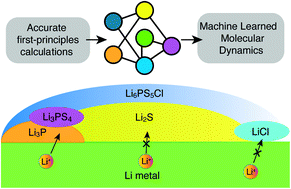
J. Mater. Chem. A, 2022,10, 19732-19742
https://doi.org/10.1039/D2TA02202H
Integrating recyclable polymers into thermoelectric devices for green electronics
Electronic waste (e-waste) recycling is one of the central frameworks of the circular economy.
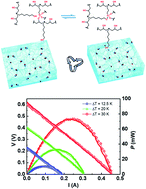
J. Mater. Chem. A, 2022,10, 19787-19796
https://doi.org/10.1039/D2TA00386D
Superior performance enabled by supramolecular interactions in metal−organic cathode: the power of weak bonds
Supramolecular interactions have been found to be essential for exceptional electrochemical performance of a close-packed metal–organic-based cathode, considered one of the best ever reported.
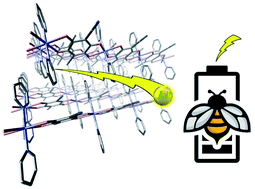
J. Mater. Chem. A, 2022,10, 19671-19679
https://doi.org/10.1039/D2TA01463G
Solvent effect on the Seebeck coefficient of Fe2+/Fe3+ hydrogel thermogalvanic cells
The Seebeck coefficient of Fe2+/3+ thermogalvanic cells is inversely proportional to the donor number of organic solvent additives, which cause rearrangement of the Fe2+/3+ solvent shell.
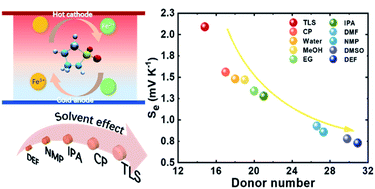
J. Mater. Chem. A, 2022,10, 19690-19698
https://doi.org/10.1039/D1TA10508F
A single-crystal nickel-rich material as a highly stable cathode for lithium-ion batteries
Compared to polycrystalline Ni-rich cathode materials, single crystal Ni-rich LiNi0.8Co0.1Mn0.1O2 materials have less irreversible structural and phase changes under varied temperature conditions, improving their cycling stability.
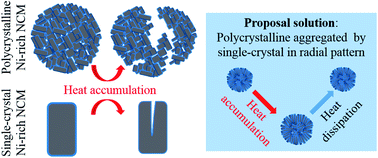
J. Mater. Chem. A, 2022,10, 19680-19689
https://doi.org/10.1039/D2TA01186G
Composite gel-polymer electrolyte for high-loading polysulfide cathodes
The PMMA-based gel-polymer electrolyte (GPE) featuring the ester group (R–COO–R′) demonstrates high ionic conductivity and strong polysulfide retention for designing safe lithium–sulfur cells with high energy density.

J. Mater. Chem. A, 2022,10, 13719-13726
https://doi.org/10.1039/D2TA01867E
Achieving 15.81% and 15.29% efficiency of all-polymer solar cells based on layer-by-layer and bulk heterojunction structures
PCEs of 15.81% and 15.29% are achieved in LbL and BHJ all-PSCs with polymer donor PM6, polymer acceptor PY-IT and CN as an additive. Over 15% PCE improvement can be obtained in LbL and BHJ all-PSCs with CN in LbL and BHJ active layers.

J. Mater. Chem. A, 2022,10, 13492-13499
https://doi.org/10.1039/D2TA02914F
Controllable synthesis of N/Co-doped carbon from metal–organic frameworks for integrated solar vapor generation and advanced oxidation processes
We propose the controllable synthesis of N/Co-doped carbon from metal–organic frameworks, which shows high performance in the integrated solar vapor generation and photocatalytic degradation of organic pollutants.

J. Mater. Chem. A, 2022,10, 13378-13392
https://doi.org/10.1039/D2TA02767D
Solvent polarity tuning to enhance the crystallinity of 2D-covalent organic frameworks for visible-light-driven hydrogen generation
The higher the polarity or the hydrogen bond donor ability of the solvent, the more easily COFs crystallize, and the higher the COF crystallization, the higher the photocatalytic H2 evolution.
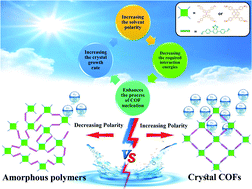
J. Mater. Chem. A, 2022,10, 12378-12390
https://doi.org/10.1039/D2TA00328G
Novel membranes with extremely high permeability fabricated by 3D printing and nickel coating for oil/water separation
3D printing and nickel coating greatly enhance the membrane permeability and selectivity for oil/water separation.

J. Mater. Chem. A, 2022,10, 12055-12061
https://doi.org/10.1039/D2TA01971J
An eco-friendly gelatin based triboelectric nanogenerator for a self-powered PANI nanorod/NiCo2O4 nanosphere ammonia gas sensor
This figure shows a self-powered ammonia sensor powered by a gelatin-polyimide based triboelectric nanogenerator (GP-TENG).
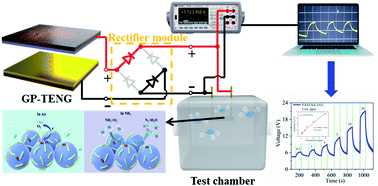
J. Mater. Chem. A, 2022,10, 10935-10949
https://doi.org/10.1039/D2TA01788A
Defect-engineered MOF-801 for cycloaddition of CO2 with epoxides
Heterogeneous catalysts based on defective metal–organic frameworks (MOFs) have attracted wide attention due to their facile formation of defects during synthesis.

J. Mater. Chem. A, 2022,10, 10051-10061
https://doi.org/10.1039/D2TA00503D
Unraveling the role of solvent–precursor interaction in fabricating heteroatomic carbon cathode for high-energy-density Zn-ion storage
A solvent–precursor interaction-guided synthetic strategy is proposed to design heteroatomic carbon cathodes with customized microstructures towards efficient Zn-ion energy storage.
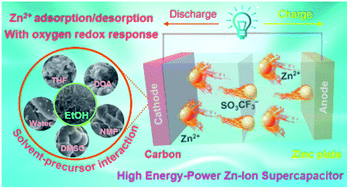
J. Mater. Chem. A, 2022,10, 9837-9847
https://doi.org/10.1039/D2TA00754A
An efficient screening strategy towards multifunctional catalysts for the simultaneous electroreduction of NO3−, NO2− and NO to NH3
An efficient strategy focusing on the key protonation process was confirmed to screen multifunctional electrocatalysts for the NORR, NO2RR and NO3RR.
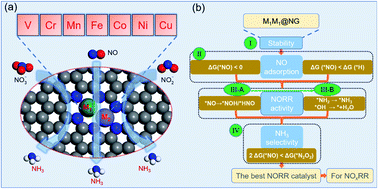
J. Mater. Chem. A, 2022,10, 9707-9716
https://doi.org/10.1039/D2TA00192F
Superior energy storage performance in (Bi0.5Na0.5)TiO3-based lead-free relaxor ferroelectrics for dielectric capacitor application via multiscale optimization design
A high-performance lead-free relaxor ferroelectric ceramic capacitor designed by a multiscale optimization strategy for energy storage applications.

J. Mater. Chem. A, 2022,10, 9535-9546
https://doi.org/10.1039/D2TA00380E
Chemical etching induced microporous nickel backbones decorated with metallic Fe@hydroxide nanocatalysts: an efficient and sustainable OER anode toward industrial alkaline water-splitting
An efficient and sustainable gas diffusible OER anode toward industrial alkaline water-splitting is fabricated by simply immersing Ni foam in ethanolic FeCl3 etchant, which produces a microporous Ni backbone decorated with nanocatalysts.

J. Mater. Chem. A, 2022,10, 8989-9000
https://doi.org/10.1039/D1TA10103J
Unlocking the potential of a novel hierarchical hybrid (Ni–Co)Se2@NiMoO4@rGO–NF core–shell electrode for high-performance hybrid supercapacitors
Nano-hybridization of a core–shell structure integrating a transition metal selenide with oxides results high-capacity electrode materials for energy storage devices thanks to the ample electroactive sites and relatively high electronic conductivity.

J. Mater. Chem. A, 2022,10, 7999-8014
https://doi.org/10.1039/D1TA11063B
Ultralight, highly compressible, thermally stable MXene/aramid nanofiber anisotropic aerogels for electromagnetic interference shielding
Due to the high conductivity of the anisotropic structure, the aerogel achieves excellent shielding properties. Meanwhile, the aerogel has high compressibility and excellent thermal stability, which greatly enriches the application scenarios of this shielding device.
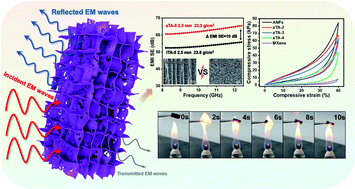
J. Mater. Chem. A, 2022,10, 6690-6700
https://doi.org/10.1039/D1TA11025J
Machine learning assisted high-throughput screening of transition metal single atom based superb hydrogen evolution electrocatalysts
Carbon-based transition metal (TM) single-atom catalysts (SACs) have shown great potential toward electrochemical water splitting and H2 production.
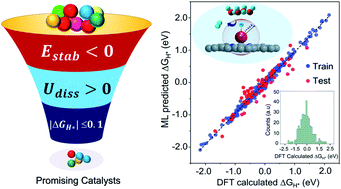
J. Mater. Chem. A, 2022,10, 6679-6689
https://doi.org/10.1039/D1TA09878K
Self-driven dual hydrogen production system based on a bifunctional single-atomic Rh catalyst
A self-powered dual hydrogen production system constructed by combining a Zn–H2 battery and an overall hydrazine splitting unit with Rh single atoms supported on oxygen-functionalized Ti3C2Ox bifunctional catalyst achieves a promising H2 generation rate of 45.77 mmol h−1.

J. Mater. Chem. A, 2022,10, 6134-6145
https://doi.org/10.1039/D1TA07375C
A molybdenum sulfo-oxide/cobalt oxysulfide Z-scheme heterojunction catalyst for efficient photocatalytic hydrogen production and pollutant reduction
Sulfur-doped oxide (oxysulfide)/oxygen-doped sulfide (sulfo-oxide) with a Z-scheme heterogeneous interface improves the efficiency of photocatalytic hydrogen production.
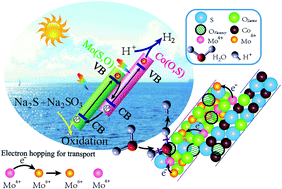
J. Mater. Chem. A, 2022,10, 5328-5349
https://doi.org/10.1039/D1TA09053D
Machine learning and molecular dynamics simulation-assisted evolutionary design and discovery pipeline to screen efficient small molecule acceptors for PTB7-Th-based organic solar cells with over 15% efficiency
A multi-stage machine learning and molecular dynamics simulation-assisted pipeline is introduced for the time- and cost-efficient design and screening of small molecule acceptors for organic solar cells.
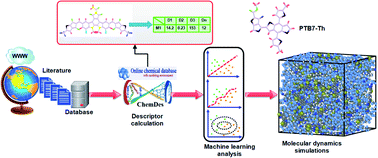
J. Mater. Chem. A, 2022,10, 4170-4180
https://doi.org/10.1039/D1TA09762H
Modulating heterointerfaces of tungsten incorporated CoSe/Co3O4 as a highly efficient electrocatalyst for overall water splitting
Electrochemical water-splitting is emerging as a promising pathway to produce pure and green hydrogen. Herein, we prepared a tungsten incorporated CoSe/Co3O4 heterostructure and employed it as an efficient electrocatalyst for overall water splitting.
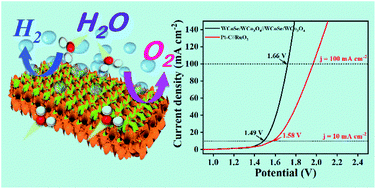
J. Mater. Chem. A, 2022,10, 3782-3792
https://doi.org/10.1039/D1TA09932A
Delicate crystallinity control enables high-efficiency P3HT organic photovoltaic cells
The time-dependent evolution of a P3HT:nonfullerene blend was revealed during annealing. The optimal blend gives 10.7%, which breaks the 10% benchmark for P3HT-solar cells.

J. Mater. Chem. A, 2022,10, 3418-3429
https://doi.org/10.1039/D1TA10161G
Structural, electronic, and electrocatalytic evaluation of spinel transition metal sulfide supported reduced graphene oxide
Highly active and durable hierarchical structure of ZnCo2S4 grown on reduced graphene oxide nanosheet electrocatalysts for the green production of hydrogen gas via water electrolysis.
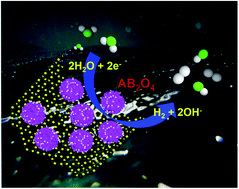
J. Mater. Chem. A, 2022,10, 1999-2011
https://doi.org/10.1039/D1TA08224H
Hollow MoC/NC sphere for electromagnetic wave attenuation: direct observation of interfacial polarization on nanoscale hetero-interfaces
In situ constructing hetero-interface, and revealing its interfacial polarization is challenging. Here, the Mo defect-induced interfacial polarization on MoC(−)/NC(+) interface was clarified, and for the first time, directly observed by hologram.
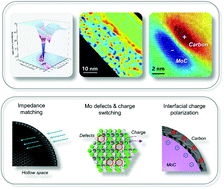
J. Mater. Chem. A, 2022,10, 1290-1298
https://doi.org/10.1039/D1TA09357F
About this collection
To mark the Lunar New Year, this web collection features the top 50 most popular articles published in Journal of Materials Chemistry A in 2022 by corresponding authors based in countries celebrating Lunar New Year.
Congratulations to all of the authors whose articles have been featured!